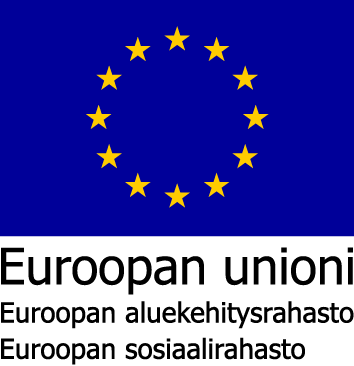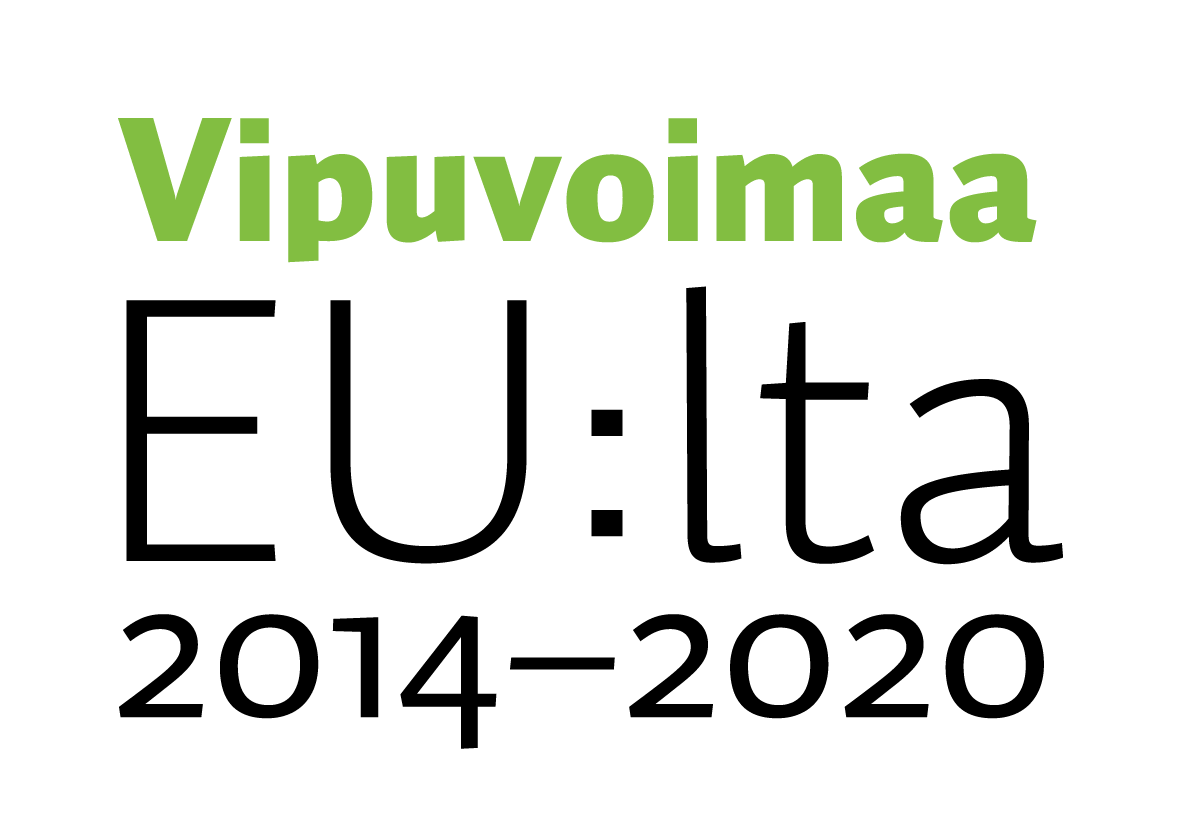

 |
 |
Hankekoodi: S21833
Hankkeen nimi: Transit - Rikosseuraamusasiakkaat osaamisella työelämään
Toimintalinja: 4. Koulutus, ammattitaito ja elinikäinen oppiminen
Erityistavoite: 9.1. Siirtymävaiheita ja koulutuksellista tasa-arvoa tukevien palveluiden parantaminen
Suunnitelman mukainen toteutusaika: Alkaa 1.8.2019 ja päättyy 31.12.2021
Toiminnan tila: Toiminta päättynyt
Vastuuviranomainen: Pohjois-Pohjanmaan elinkeino-, liikenne- ja ympäristökeskus
Hakijan virallinen nimi: Keski-Uudenmaan koulutuskuntayhtymä
Organisaatiotyyppi: Ammatillinen oppilaitos
Y-tunnus: 0213834-5
Jakeluosoite: Sibeliuksenväylä 55
Puhelinnumero: 0927381
Postinumero: 04400
Postitoimipaikka: Järvenpää
WWW-osoite: http://www.keuda.fi
Hankkeen yhteyshenkilön nimi: Arto Lehtola
Yhteyshenkilön asema hakijaorganisaatiossa: Toimialapäällikkö
Yhteyshenkilön sähköpostisoite: arto.lehtola(at)keuda.fi
Yhteyshenkilön puhelinnumero: 0401744414
Hakijoiden lukumäärä tai tuen siirto -menettely:
Transit hankkeessa tuotetaan toimintamalli, jolla tuetaan ja selkeytetään vankien koulutussiirtymiä. Erityisesti huomiota kiinnitetään toisen asteen siirtymiin. Hankkeessa tunnistetaan siirtymien kriittiset pisteet ja tarkastellaan niitä viiden päätavoitteen kautta. Ensimmäinen tavoite keskittyy vangin työllistymiseen, toinen tavoite keskittyy digi-taitojen nostamiseen, kolmas tavoite keskittyy osaamotoiminnan toimintamallin luomiseen, neljäs tavoite painottuu RISEn henkilöstön sekä opettajien vankilaopetuksen pedagogiseen valmennukseen ja viides tavoite painottuu kohderyhmäpohjaisesti NEET-nuorten sekä YKS-asiakkaiden ja lyhytaikaisvankien siirtymiin.
Hankkeessa luodaan työnantajaverkosto tämän toimintamallin rinnalle, joka jatkossa tekee yhteistyötä vankiloiden sekä koulutuksen järjestäjien kanssa tukien vankien harjoittelujaksoja sekä työllistymistä opiskelu- ja vapautumisvaiheessa. Verkostossa tulee olemaan 6-10 erisuuruista yritystä, mutta vähintään kolme suurta työnantajaa. Digitaitojen nostamisessa määritellään vangin minimitaidot, joilla selviää siirtymävaiheiden sähköisestä asioinnista eri tahojen kanssa, valmiudet käyttää erilaisia digitaalisia oppimisympäristöjä opinnoissaan sekä muut kansalaisen tietotekniset perustaidot. Osaamotoimintamallin kehittämisellä tuotetaan systemaattiset ohjaus- ja tukipalvelut, jotka kattavat siirtymävaiheet perusopetuksesta työelämään - huomioiden linkit TE-, TYP-, Ohjaamoiden ja KELA-suuntaan. Pedagogisella valmennuohjelmalla nostetaan henkilöstön ohjausvalmiuksia, jonka jälkeen he pystyvät paremmin tukemaan ja kannustamaan vankeja opintojen aikana. YKS-asiakkaiden siirtymille luodaan selkeä prosessi, joka myös pilotoidaan hankkeen aikana.
1) On tunnistettu koulutussiirtymiin liittyvät haasteet ja kehitetty tarvittavat sillat ohjaus- ja tukitoimenpiteineen. Vankien opintopolut eivät keskeydy siirtymissä. Koulutustarjonta ja urasuunnittelu-/urapolkuajattelu laajenee.
2) Yhä useamman vangin tietotekniset taidot ja valmiudet ovat parantuneet ja taidot tukevat vankien opintojen edistymistä ja integroitumista yhteiskuntaan ja rikoksettomaan elämään.
3) Tehdyn selvityksen pohjalta on laadittu ja pilotoitu henkilöstön pedagoginen valmennusohjelma, jolla valmennetaan vankien kanssa lähityötä tekevää henkilöstöä tunnistamaan opiskelun aloittamiseen/opiskeluun liittyviä esteitä ja tukemaan vankeja hakeutumaan koulutukseen. Tämän johdosta lyhytaikaisvankien mahdollisuudet opiskella ovat parantuneet ja opiskelumahdollisuutta on myös hyödynnetty. Lyhyet koulutukset tarjoavat onnistumisen mahdollisuuksia ja nostavat vankien itsetuntoa ja motivaatiota.
4) Rikosseuraamuslaitoksen ja oppilaitosten yhteistyö sekä muiden viranomaisten yhteistyö on rakenteissa ja edistää kokonaisvaltaisesti vangin opintojen etenemistä siirtymävaiheissa ja osallistumista yhteiskuntaan. Yritysyhteistyö on käynnistynyt ja rakenteet rikosseuraamusasiakkaiden työllistymisen edistämiseksi on luotu.
5) On selvitetty haastekohdat ja kehitetty ohjaus- ja tukitoimenpiteet yhdyskuntaseuraamusasiakkaan siirtymisen tukemiseksi yhdyskuntapalvelusta ammatillisiin opintoihin. Yhdyskuntapalvelun aikana kertynyt osaaminen tunnistetaan ja tunnustetaan osaksi opintoja.
6) Tietotekniset valmiudet parantuneet ja hankittua osaamista on osoitettu suorittamalla esim.@-ajokortteja ja A-ajokortteja.
Vankien koulutustaso on matala. Hankkeen toimenpiteet edistävät opiskelevien vankien mahdollisuuksia ja lisäävät opiskelevien määrää Etelä-Suomen rikosseuraamusalueella tulevaisuudessa. Myös vankilaopetuksen koulutustarjonta laajenee ja erilaisia tutkinnon osia on mahdollista opiskella vankeuden aikana. Tarjonnassa huomioidaan myös tulevaisuuden yhteiskunnan työvoiman osaamistarpeet ja elinikäinen oppiminen. Pitkällä aikavälillä rikollisuudesta (vangit) yhteiskunnalle aiheutuvat kustannukset laskevat (n. 1,8 miljardia € /vuosi), ja yhä useammat vangit integroituvat yhteiskuntaan.
RISEn sekä vankilaopetusta järjestävien koulutuksen järjestäjien
henkilöstö, yhdyskuntaseuraamustoimistojen henkilöstö
Vangit, yhdyskuntaseuraamustoimistojen asiakkaat, Vankilan, yhdyskuntaseuraamustoimistojen sekä koulutuksen järjestäjien henkilöstö, KELA-, TE- virkailijoita sekä työantajien henkilöstöä.
Myönnetty EU- ja valtion rahoitus: 420 000
Toteutunut EU- ja valtion rahoitus: 384 717
Suunniteltu julkinen rahoitus yhteensä: 496 926
Toteutunut julkinen rahoitus yhteensä: 455 181
Hankkeen toiminta on valtakunnallista
Jakeluosoite:
Postinumero:
Postitoimipaikka:
Suunniteltu: 6
Toteutunut seurantatietojen mukaan: 7
Suunniteltu: 210
| Välitön | Välillinen | |
| Ekologinen kestävyys | ||
| Luonnonvarojen käytön kestävyys | 0 | 0 |
| Ei ole hankkeessa varsinaisesti huomioitu asia. | ||
| Ilmastonmuutoksen aiheuttamien riskien vähentäminen | 1 | 0 |
| Ei ole hankkeessa varsinaisesti huomioitu asia. | ||
| Kasvillisuus, eliöt ja luonnon monimuotoisuus | 0 | 0 |
| Ei ole hankkeessa varsinaisesti huomioitu asia. | ||
| Pinta- ja pohjavedet, maaperä sekä ilma (ja kasvihuonekaasujen väheneminen) | 0 | 0 |
| Ei ole hankkeessa varsinaisesti huomioitu asia. | ||
| Natura 2000 -ohjelman kohteet | 0 | 0 |
| Ei ole hankkeessa varsinaisesti huomioitu asia. | ||
| Taloudellinen kestävyys | ||
| Materiaalit ja jätteet | 0 | 0 |
| Ei ole hankkeessa varsinaisesti huomioitu asia. | ||
| Uusiutuvien energialähteiden käyttö | 0 | 0 |
| Ei ole hankkeessa varsinaisesti huomioitu asia. | ||
| Paikallisen elinkeinorakenteen kestävä kehittäminen | 2 | 5 |
| Projektin toimenpiteet edistävät paikallisen elinkeinorakenteen kestävää kehittämistä ennen kaikkea välillisesti lisäämällä vankien inkluusiota koulutukseen ja elinikäiseen oppimiseen, kehittämällä heidän osaamistaan ja sitä kautta vahvistamalla heidän asemaansa työmarkkinoilla. Tässä voidaan huomioida yhteiskunnan myös elinkeinoelämän osaamistarpeet. | ||
| Aineettomien tuotteiden ja palvelujen kehittäminen | 1 | 2 |
| Projektissa ei suoraan kehitetä yritysten aineettomia tuotteita tai palveluja. Tukemalla vankien koulutusmahdollisuuksia ja asemaa työmarkkinoilla vastaamaan elinkeinoelämän tarpeita, projektilla voi olla välillinen vaikutus näiden kehittymisessä. | ||
| Liikkuminen ja logistiikka | 0 | 0 |
| Ei ole hankkeessa varsinaisesti huomioitu asia. | ||
| Sosiaalinen ja kulttuurinen kestävyys sekä yhdenvertaisuus | ||
| Hyvinvoinnin edistäminen | 9 | 8 |
| Hankkeen tavoite on vankien koulutustason nostaminen lisäämällä koulutusmahdollisuuksia. Tällä on suora vaikutus vankien hyvinvoinnin edistämiseen. | ||
| Tasa-arvon edistäminen | 8 | 9 |
| Hankkeessa vahvistetaan vankien inkluusiota koulutukseen ja työmarkkinoille. Hankkeen tavoitteena on tuoda koulutus vahvaksi osaksi vangin motivointia ja kuntoutusta. | ||
| Yhteiskunnallinen ja kulttuurinen yhdenvertaisuus | 8 | 8 |
| Hankkeen tavoite on tukea vankien yhdenvertaisuutta lisäämällä inkluusiota koululutukseen ja sitä kautta työmarkkinoille. Projekti huomioi myös vankien moninaisuuden, erilaisuuden ja yksilölliset lähtökohdat osana koulutussiirtymien kehittämistä ja koulutusmahdollisuuksien tarjoamista. | ||
| Kulttuuriympäristö | 0 | 0 |
| Ei ole hankkeessa varsinaisesti huomioitu asia. | ||
| Ympäristöosaaminen | 5 | 3 |
| Hankkeessa edistetään sitä, että vangeilla on mahdollisuus suorittaa ammatillisten perustutkintojen tutkinnon osia (ei kuitenkaan järjestetä hankkeen varoin), joiden arviointikriteereissä on huomioitu kestävän kehityksen periaatteiden hallitseminen työtoiminnassa. Näin hanke kehittää suoraan vankien ympäristöosaamista. Voidaan myös katsoa, että koulutuksen merkityksen vahvistaminen osana vankien motivointia ja kuntoutusta tukee tätä päämäärää välillisesti laajemminkin. | ||
TRANSIT – Rikosseuraamusasiakkaat osaamisella työelämään
Kouluttautuminen vankeusaikana parantaa vankien mahdollisuuksia sijoittua työelämään, integroitua yhteiskuntaan ja sitoutua rikoksettomaan elämään vapautumisen jälkeen. Ammatillisen koulutuksen reformi on tuonut uusia mahdollisuuksia luoda yksilöllisiä koulutuspolkuja. Vankien koulutuspolkujen on todettu herkästi katkeavan nivelvaiheissa ja muutostilanteissa. Hankkeen tarkoituksena oli lisätä vankilakoulutuksen tarjontaa, vankilakoulutuksen vaikuttavuutta ja opiskelevien vankien määrää. Lisäksi tarkoituksena oli tuottaa toimintamalli, jolla tuetaan vankien koulutussiirtymiä ja koulutuksen jatkumista perusopetuksesta aina työelämään asti. TRANSIT-hankkeen kohderyhmänä oli rikosseuraamusasiakkaiden kanssa lähi- ja ohjaustyötä tekevä henkilöstö kuten Rikosseuraamuslaitoksen henkilöstö, opetus- ja ohjaushenkilöstö ja TE-palveluiden henkilöstö.
Hankkeen alussa tunnistettiin koulutussiirtymiin liittyvät haasteet, siirtymien kriittiset pisteet ja toisen asteen opintojen aloittamiseen liittyvät esteet. Hankkeessa kartoitettiin koulutukseen hakeutumista heikentäviä ja koulutusjatkumoa uhkaavia kriittisiä tekijöitä yhteistyössä kohderyhmän kanssa. Kriittiset tekijät jaoteltiin yksilötason ja toimintaympäristön tason tekijöiksi. Todettiin, että siirtymien tukeminen edellyttää kokonaisvaltaista lähestymistapaa sekä tuen ja ohjauksen räätälöimistä rikosseuraamusasiakkaiden yksilöllisistä tarpeista käsin. Hanketta toteutettiin Etelä-Suomen rikosseuraamusalueella ja tuloksia levitettiin valtakunnallisesti.
Hankkeen päätavoitteena oli kehittää ammatillisen vankilakoulutuksen toteuttajien ja Risen Etelä-Suomen rikosseuraamusalueen yhteinen toimintamalli vankien koulutussiirtymien kokonaisvaltaiseksi tukemiseksi. Lisäksi pyrittiin lisäämään opiskelevien vankien määrää. Päätavoitteisiin pyrittiin viiden osatavoitteen kautta.
1) Vankien työllistymisen edistäminen
Hankkeessa mallinnettiin siirtymät perusopetuksesta työelämään asti yhteistyössä kohderyhmän kanssa. Lisäksi kuvattiin erilaisia polkuja työelämään. Siirtymien mallintaminen oli haastavaa, sillä toimintakäytänteet vaihtelevat. Mallintamisessa tehtiin yhteistyötä Risen, koulutuksen järjestäjien ja TE-palveluiden henkilöstön kanssa. Mallinnuksessa kuvattiin toimenpiteet sekä toimijat ja heidän vastuunsa siirtymissä.
Hankkeessa luotiin kuuden työnantajan verkosto tukemaan vankien työllistymistä. Työnantajat olivat mukana valitsemallaan tavalla ja rekrytoinnin käytänteistä sovittiin yrityskohtaisesti. Työnantajaverkoston luominen oli pandemian aikana haasteellista. Työnantajat kokivat kuitenkin vankien työllistämisen tärkeäksi ja merkitykselliseksi. Hankkeessa ei käynnistynyt työllistymispilotteja. Siihen vaikuttivat rajoitukset ja sulut vankiloissa sekä työnantajien vaikea tilanne. Orastavia pilotteja kaatui mm. vangin sairastumiseen ja rangaistusajan pitenemiseen. Rikosseuraamusasiakkaan työllistyminen on pitkä prosessi. Koska tilanteeseen vaikuttaa useita muuttujia, vain osa pyrkimyksistä toteutuu. Työnantajaverkoston toimintaa jatketaan hankkeen jälkeen.
Hankkeessa luotiin Poluttamo -sivusto, jossa kuvataan mm. kriittiset tekijät, koulutus- ja työllistymispolut toimijoineen ja vastuineen sekä työnantajaverkoston toiminta. Sivustoa voi käyttää apuna suunniteltaessa asiakkaan koulutuspolkuja ja työllistymistä. Sivuston käyttöä ohjattiin valtakunnallisesti toteutetuissa webinaareissa.
Poluttamo: https://sites.google.com/view/transit-poluttamo-keuda/etusivu
2) Henkilöstön digitaitojen kehittäminen
Hankkeessa toteutettiin Risen henkilöstölle suunnattuja tietotekniikkakoulutuksia vankiloissa ja verkossa. Rikosseuraamuslaitoksen henkilöstö pystyy hankkeen toimien seurauksena ohjaamaan vankeja tavallisimpien opiskelussa käytettävien ohjelmien käytössä, kuten Office 365, Power Point, Excel ja Word-ohjelmat. Hankkeessa tuotettiin kirjalliset ohjeet mobiililaitteiden käyttöä varten vapautumisvaihetta ajatellen, joita voi hyödyntää vapautumisvaiheen ohjauksessa. Toimenpiteillä vaikutettiin välillisesti myös vankien digiosaamiseen. Osassa koulutustapahtumista oli myös vankeja mukana, jolloin henkilöstö sai mahdollisuuden harjoitella vankien digiohjausta.
Tietotekniikkakoulutusten (digiohjaus) materiaali on Osaamo -sivustolla: https://sites.google.com/inlive.fi/transit-osaamo/koulutusmateriaalit/transit-digiohjaus
3) Osaamo -mallin kehittäminen
Osaamo rakennettiin sähköiseksi kokonaisuudeksi. Se suunniteltiin, mallinnettiin, pilotoitiin, jalkautettiin ja levitettiin valtakunnallisesti. Osaamo -sivuston kautta on saatavilla kaikki hankkeessa tuotettu materiaali.
Osaamo rakennettiin asiakasohjauksen työkaluksi ja tietopankiksi. Sen sivukartta tuo esille ohjauksen ja tuen sisällöllisiä osa-alueita, joita rikosseuraamusasiakkaan kokonaisvaltaisessa ohjauksessa tulee huomioida. Osaamoon on koottu tietoa, työkaluja ja menetelmiä, joita voidaan hyödyntää mm. rikosseuraamusasiakkaan tuen tarpeiden kartoituksessa, tuen tarpeisiin vastaamisessa, ohjauksessa ja opiskelun tukemisessa. Sieltä löytyy myös toimijaverkosto. Sivuston etusivulla on Osaamon käytöstä tehty esittelyvideo.
Osaamoon tuotettiin mm. alkukartoituslomake asiakastyön aloitukseen. Sivustolla on mallinnus tutkintavangin opinto-ohjauksesta, jota pilotoitiin hankkeen aikana yhteistyössä vankilahenkilöstön kanssa. Malli soveltuu harkinnanvaraisesti myös muiden kuin tutkintavankien opinto-ohjaukseen, esimerkiksi vankiloissa, joissa ei ole opinto-ohjaajaa. Se kehitettiin tutkintavankilaan, koska niissä ei ole opinto-ohjaajia. Tutkintavangin opinto-ohjauksesta on videotallenne sivustolla.
Osaamo: https://sites.google.com/inlive.fi/transit-osaamo
4) Pedagoginen valmennusohjelma
Opetus- ja vankilahenkilöstölle sekä sidosryhmille toteutettiin erityispedagogista osaamista hyödyntävä valmennusohjelma. Tavoitteena oli mm. vahvistaa vahvuuslähtöisten menetelmien käyttöönottoa, lisätä ymmärrystä erityisen tuen tarpeista ja vahvistaa moniammatillista yhteistyötä. Se antoi valmiuksia tukea ja ohjata rikosseuraamusasiakkaita opiskelun aikana ja siirtymissä. Ohjelma toteutettiin verkossa. Pilotin ja levitysvaiheen aikana järjestettiin yhteensä 9 webinaaria, 8 workshopia ja 3 moniammatillista vertaismentorointiklinikkaa. Lisäksi toteutettiin HOKS RANSUn tukena siirtymissä -työpaja ja tuotettiin 5 itsenäisesti opiskeltavaa materiaalipakettia, jotka sisältävät mm. työkirjan positiivisesta pedagogiikasta. Hankkeen aikana toteutettiin myös verkkokurssi ”Vankilasta työelämään – Kuinka tukea neurokirjon henkilöä” (3 op).
Valmennusohjelma toteutui sisällöllisesti suunnitelman mukaan ja osallistujamäärä ylitti odotukset. Valmennuksen positiivista antia olivat moniammatillisuus, käytännönläheisyys ja mahdollisuus vertaistukeen ja -mentorointiin.
Pedagogiseen valmennusohjelmaan tuotettu materiaali on Osaamo -sivustolla: https://sites.google.com/inlive.fi/transit-osaamo/koulutusmateriaalit/transit-valmennus
5) Yhdyskuntaseuraamusasiakkaiden koulutussiirtymien mallintaminen yhdyskuntapalvelusta opintoihin
Hankkeessa luotiin malli sekä opas Yhdyskuntapalvelussa opinnollistaminen. Yhdyskuntaseuraamustoimistojen henkilöstöä osallistui prosessin suunnitteluun. Osaamisen tunnistaminen ja tunnustaminen toteutuivat onnistuneessa yhdyskuntapalvelussa opinnollistamisen pilotissa. Mallin laajempi käyttöönotto hidastui pandemian johdosta, eikä se päässyt etenemään suunnitellusti.
Tavoitteen mukaisesti selvitettiin haastekohdat ja kehitettiin ohjaus- ja tukitoimet, jotka edistävät opintojen aloittamista tai jatkamista yhdyskuntapalvelun aikana. Ohjaus- ja tukitoimenpiteet liitettiin asiakastyön prosessiin, jolloin koulutus- ja työllistymisasioiden edistäminen yhteensovitettiin yhdyskuntaseuraamusasiakkaan täytäntöönpanoprosessiin. Prosessissa huomioitiin, miten rangaistuksen eri vaiheissa mm. huomioidaan keskeytyneet opinnot, selvitetään oppimisvaikeuksia, hyödynnetään rangaistusaikaa opintojen aloittamisessa tai työelämään kiinnittymisessä sekä turvataan jatkumot.
Yhdyskuntapalvelussa opinnollistaminen materiaali on Poluttamo -sivustolla:
https://sites.google.com/view/transit-poluttamo-keuda/koulutus/opinnollistaminen/yhdyskuntapalvelussa-opinnollistaminen
Hankkeen tavoitteena oli tavoittaa 210 osallistujaa. Hankkeen toimintoihin osallistui 378 henkilöä. Osa henkilöistä osallistui useampaan kuin yhden hankkeen osatoteutuksen tapahtumiin. ESR-hankkeen aloitusilmoituksen palautti näistä 245 osallistujaa ja lopetusilmoituksen 173 osallistujaa.
Hankkeen aikana osallistujilta kerättiin palautetta. Yhdyskuntapalvelussa opinnollistaminen malli arvioitiin lisäksi Zoomi-hankkeen asiantuntija-arvioinnissa. Arvioinnit olivat pääasiassa hyviä ja tukivat hankkeen toteuttamista. Hanke tiivisti yhteistyötä hankkeeseen osallistuneiden koulutuksen järjestäjien, Rikosseuraamuslaitoksen ja yritysten välillä. Hankkeen toteuttivat Keski-Uudenmaan koulutuskuntayhtymä (Keuda), Hyria Koulutus, ammattiopisto Spesia, ammattiopisto Live ja Rikosseuraamuslaitos.